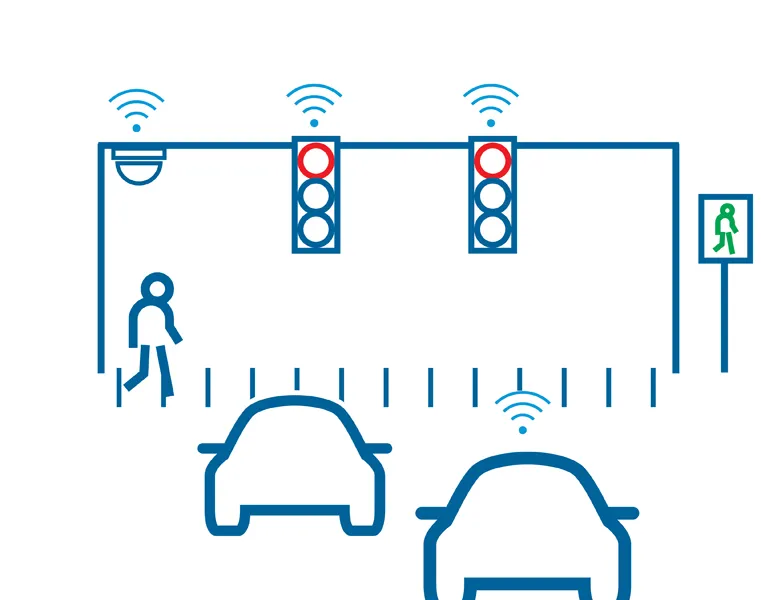Rennicks UK, in conjunction with Bluetrace, is using Traffex 2015 to launch a new traffic management system which it says is a significant leap forward in the battle to improve safety and reduce congestion.
The system, developed in conjunction with Bluetrace, uses the most sensitive Bluetooth and wi-fi technology on the market to monitor and measure traffic movement from the roadside by connecting to devices inside vehicles.
The data is transmitted to a central location to present a clear, real-time p
April 10, 2015
Read time: 3 mins
Rennicks UK, in conjunction with Bluetrace, is using 136 Traffex 2015 to launch a new traffic management system which it says is a significant leap forward in the battle to improve safety and reduce congestion.
The system, developed in conjunction with Bluetrace, uses the most sensitive Bluetooth and wi-fi technology on the market to monitor and measure traffic movement from the roadside by connecting to devices inside vehicles.
The data is transmitted to a central location to present a clear, real-time picture of the road network and live messages can then be relayed on variable message signs to keep drivers informed. It means congestion and incidents can be identified quickly – improving safety and efficiency across the country and optimising traffic flow.
According to Rennicks, the system will communicate with devices such as mobile phones and navigation systems to provide travel time data from passing vehicles. It will record and analyse traffic volumes and speed data – creating key information in helping to improve journey times, reduce congestion, fuel consumption and emissions.
The system, which can be combined with variable message signs, can also be used to improve safety and efficiency in roadwork zones. It will detect the presence and track the movement of both highways workers and their vehicles, collecting, analysing and reporting non-personal data to give contractors and repair teams near real-time vision of their entire workforce.
The technology, which utilises existing smartphones and car GPRS kits, can be used to monitor any number of work sites anywhere in the country from a central location using a web interface – helping to meet Duty of Care obligations.
Rennicks will also show other products in its range, including the Solar Dynaflex, a solar-powered, self-righting LED sign mounted on a passively safe flexible base which has been tested to meet EN 12767 requirements and will also use the exhibition to promote an impressive range of mobile variable message signs which comply to the new Traffic Advisory Leaflet 01/15. The state-of-the-art units can be combined with Bluetooth and ANPR cameras to create intelligent, bespoke solutions for the UK highways network.
Also on show will be a variety of type-approved solar and hard-wired active road studs, which offer a bright and cost-effective alternative to traditional delineation shown to improve safety.
The system, developed in conjunction with Bluetrace, uses the most sensitive Bluetooth and wi-fi technology on the market to monitor and measure traffic movement from the roadside by connecting to devices inside vehicles.
The data is transmitted to a central location to present a clear, real-time picture of the road network and live messages can then be relayed on variable message signs to keep drivers informed. It means congestion and incidents can be identified quickly – improving safety and efficiency across the country and optimising traffic flow.
According to Rennicks, the system will communicate with devices such as mobile phones and navigation systems to provide travel time data from passing vehicles. It will record and analyse traffic volumes and speed data – creating key information in helping to improve journey times, reduce congestion, fuel consumption and emissions.
The system, which can be combined with variable message signs, can also be used to improve safety and efficiency in roadwork zones. It will detect the presence and track the movement of both highways workers and their vehicles, collecting, analysing and reporting non-personal data to give contractors and repair teams near real-time vision of their entire workforce.
The technology, which utilises existing smartphones and car GPRS kits, can be used to monitor any number of work sites anywhere in the country from a central location using a web interface – helping to meet Duty of Care obligations.
Rennicks will also show other products in its range, including the Solar Dynaflex, a solar-powered, self-righting LED sign mounted on a passively safe flexible base which has been tested to meet EN 12767 requirements and will also use the exhibition to promote an impressive range of mobile variable message signs which comply to the new Traffic Advisory Leaflet 01/15. The state-of-the-art units can be combined with Bluetooth and ANPR cameras to create intelligent, bespoke solutions for the UK highways network.
Also on show will be a variety of type-approved solar and hard-wired active road studs, which offer a bright and cost-effective alternative to traditional delineation shown to improve safety.










